Ardeadoris angustolutea (Rudman,
1990)
25mm
This species is occasionally seen
at Enewetak and Kwajalein
Atolls. They seem to prefer lagoon interisland reefs and pinnacles at depths
of about 4 to 20 meters. While most of them hide under rocks by day, specimens
are sometimes seen exposed on rocks during the day or in ledges at night. One
was on a sponge encrusted piling under Medren Pier at Enewetak. Sixteen measured
specimens ranged from 8 to 25mm in length. Ardeadoris angustolutea
was first reported in the Marshalls from Enewetak Atoll in the original description
as Noumea angustolutea by Rudman
(1990).
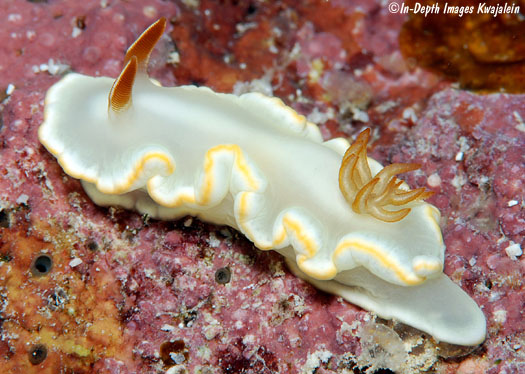
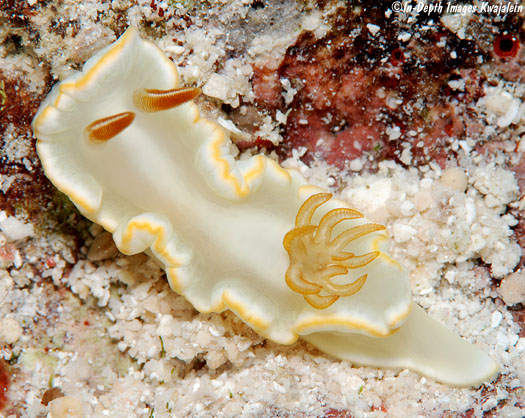
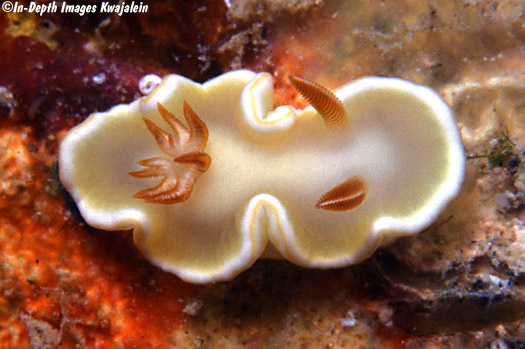
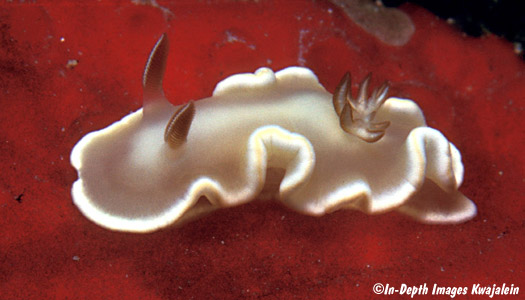
The pair below was found under
a chunk of prickly Porolithon algae on a shallow western lagoon reef
at a depth of about 6m on 20 October 2008. Right in front of the larger one
is a small cephalaspidean Colpodaspis
thompsoni.
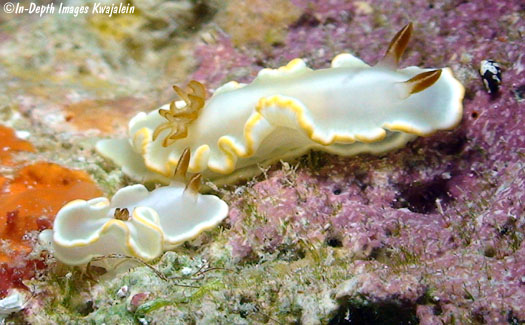
A tiny juvenile no more than 3mm
in length was photographed by Stan Jazwinski.
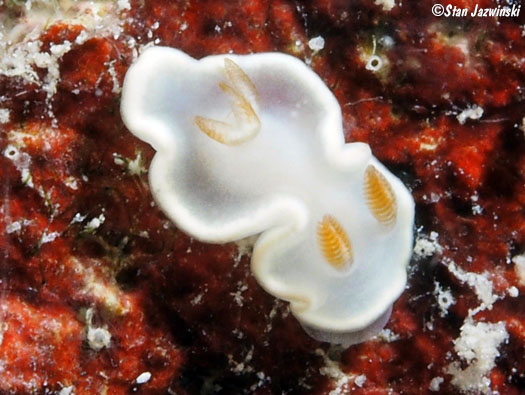
Below is a large, 25mm specimen
found at a depth of about 7m in a cave at night on a Kwajalein lagoon reef on
20 June 2009.
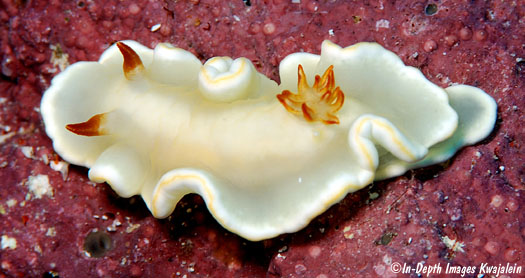
A pair over an egg mass.
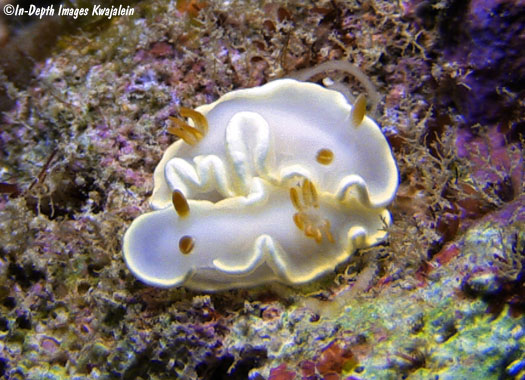
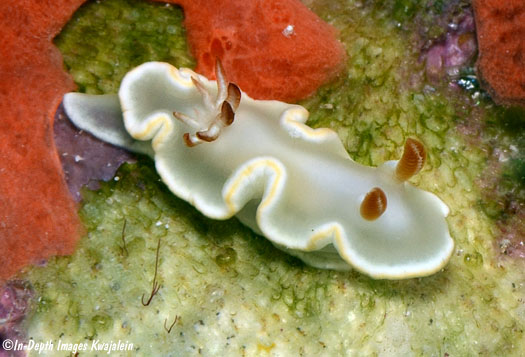
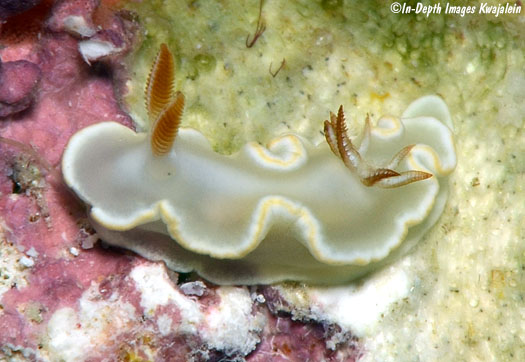
This unusually yellow individual
was under a rock in about 6m of water on the lagoon side of Ennubuj Island on
11 August 2014.
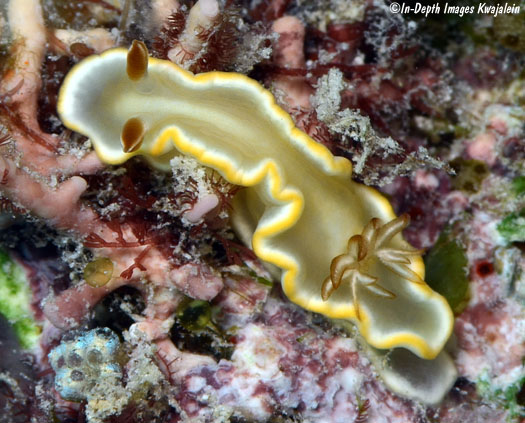
Created 18 December 2005
Updated 13 April 2018
Return to chromodorid thumbnails
UnderwaterKwaj home











